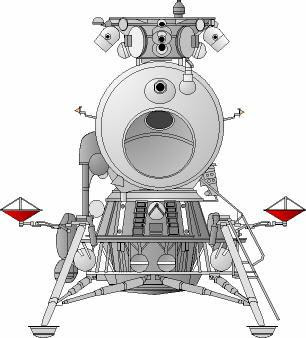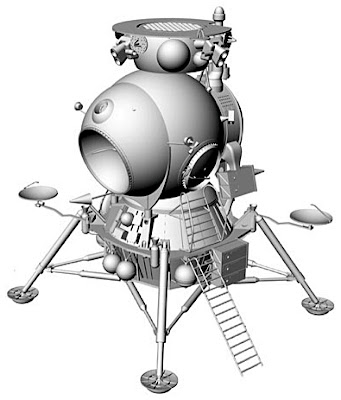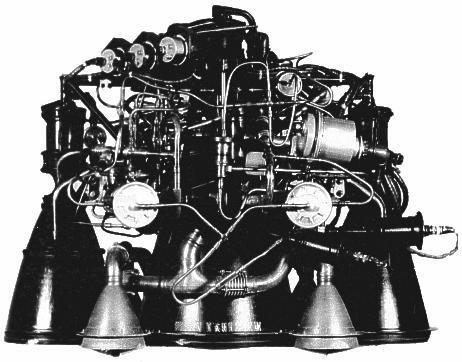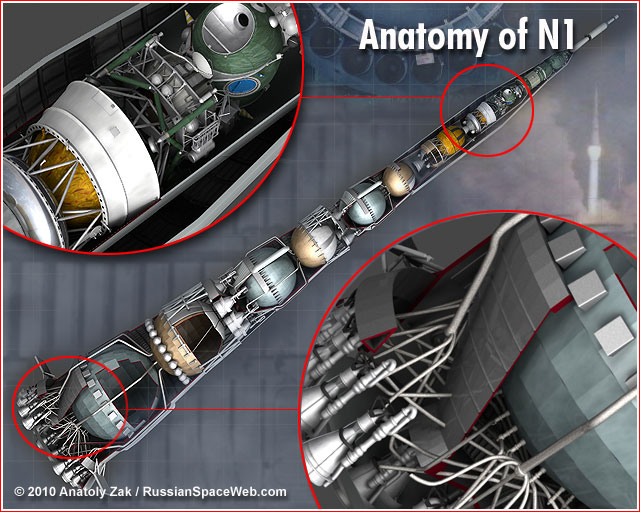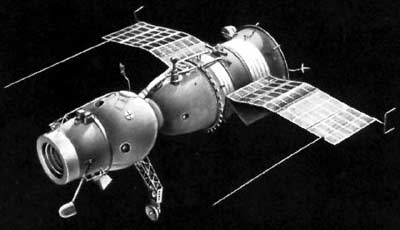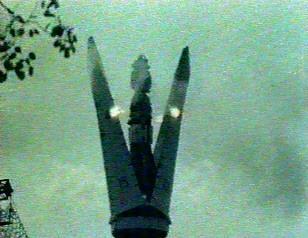With the American Project Apollo in jeopardy, the Soviet Union was quick to take all the advantage that they could from it - not publicly stating this act, of course - and set to work on the next major milestone in their Manned Lunar Programme. The Soyuz 7K-L1 Manned Circumlunar Flights - codenamed ‘Zond’ to help hide its nature - was coming to fruition. Comprising of the Soyuz Re-Entry Module and the Service Module, both lightened to reduce the mass to a level that the N11 Launch Vehicle and Block D would be able to cope with. Though this saw the deletion of the Reserve Parachute and some of the propellant, it was felt that the improvements being made to the Soyuz (of which the L1 was derived from) would allow for it.
In the March of 1967, an N11 launch vehicle carried the 7K-L1 and Block D safely into Earth Orbit, following which the Block D was ignited, taking the Spacecraft well away from the Moon, as was planned, since this first test flight was to assess the ability of the capsule to function at Lunar Distances, through the Earth’s Radiation Belts and beyond its Magnetosphere. This flight passed all its requirements and allowed for the next group of flights to take place.
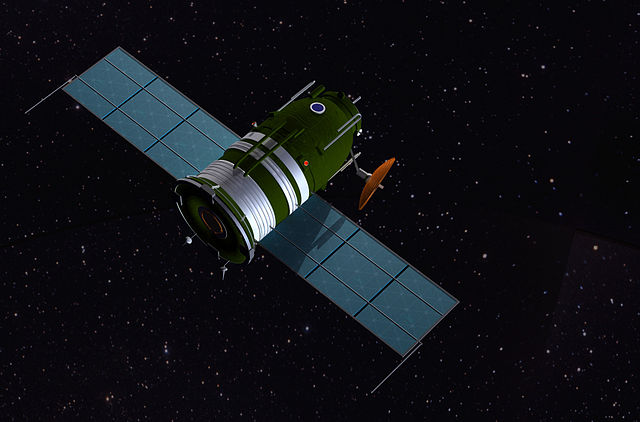
The Soyuz 7K-L1, 'Zond'
In fact, just two months later, they were ready with their next attempt. Again, the N11 performed well, and this time, the 7K-L1 was placed on a proper Trans-Lunar Trajectory, conducting one loop around the Moon, during which the new guidance system was tested (chiefly its star tracker and sun tracker), which would be a necessity for the future Soyuz-LOK flights.
There were problems encountered with the flight, while the sun tracker was performing properly, the star tracker was stubbornly failing to acquire Sirius, though the first and second mid-course manoeuvres weren’t entirely necessary, it would be vital for the return leg (and the third planned mid-course burn) to keep the capsule from bouncing back into Space. Repeated attempts under various settings were conducted to try and acquire Sirius for the final required mid-course burn, and finally, through a high-density filter setting, they were finally able to correctly orient the spacecraft and make the required course-correction, which was good enough to not need any further corrections.
As the spacecraft re-entered, a slight error with the re-entry guidance programme meant that while the L1 did perform a good skip re-entry, it was sent off-course from its targeted landing site by some significant margin, almost 300 Km East, North-East with higher than predicted re-entry G-Forces. Nonetheless, OKB-1 - which by now had been renamed TsKBEM - decided that none of the problems detected in the flight would be particularly difficult to resolve, and they could be ready for the next attempt at its planned July attempt.
But while the N11 and Zond were performing quite well, the N1 was still facing serious “teething issues”, and had been grounded for 10 months as they worked to resolve the problems that the first test flight had highlighted when it had failed. It was a late June morning when the next N1 sought to prove that it was up to the job..

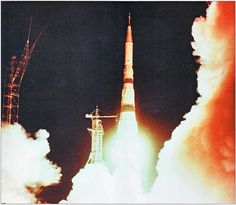
Again, for over 120 seconds, the flight performed well, but as a pre-programmed command to shut down some of the engines early - to prevent an overstressing of the stage structure - was given, sensors showed Pogo Oscillations building up in the N1, if they grew too powerful, they could tear the entire launch vehicle apart. For 25 stressful seconds, the ground crew watched the readings grow worse and worse, the N1 was ins serious danger of breaking itself apart. Finally, the order was given to fire the Block B early and shut down the Block A, hoping that that would be able to halt the POGO event. Fortunately, the gamble worked. As the Block B continued to climb, the flight parameters were returning to their normal levels, and less than 11 minutes into the flight, the N1’s mock-payload was safely in orbit, if a little lower than its planned 225 Km circular (204x186 Km).
This didn’t stop the Soviet State Media from announcing that the N1 had succeeded in its goal of placing a test payload into Low Earth Orbit - again, not exactly a lie - and that it gave them unprecedented capability with regards to their spaceflight programme. NASA, and the whole of the Western World, could only assume that the Soviets were ahead, and needed to step up a few gears. What they didn’t know, was that the Soviet Lunar Landing effort was still being held back by the need to re-work their Soyuz to make it safe for flight, and a critical component that hadn’t even been test-flown yet.
The July and September of 1967 witnessed the next pair of unmanned Zond flights (5 & 6). While both did manage to complete their missions, Zond 5 had seen the re-entry guidance fail again and force the capsule into a harsh ballistic re-entry that splashed down in the Indian Ocean, while Zond 6 had been forced to eat through all its available propellant to get it into the correct re-entry window. Even so, Mishin had decided that with all the errors and faults identified and rectified (and besides, the living payloads that they had carried had survived), they could safely send crew on a Manned Circumlunar Mission. And while it was true that they had missed the 50th Anniversary of the Bolshevik Revolution, they did still hold a lead over the USA, which was enough, for enough of the Soviet Leadership.
The November, however, saw NASA prove that they weren’t out of the race. To try and make up for lost ground, this first test flight of the Saturn V would be an all-up test, with the Saturn S-IC and S-II being fired for the first time in full flight conditions, the first time that the S-IVB would be re-started, and the first time that the Apollo CM would re-enter at Lunar Re-Entry velocities.
In the early morning, the Saturn V’s 5 F-1 engines roared into life, sending shockwaves of noise far greater than expected in all directions, buffeting the VAB, the Launch Control Centre, and the press building, all located at least 3 miles away to protect them from possible on-the-pad explosions of the Saturn V.

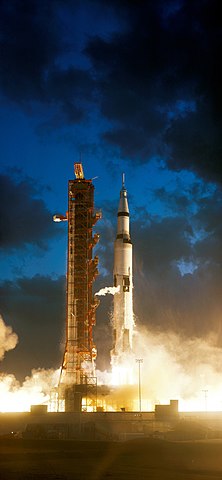
This first test flight for the Saturn V was flawless, placing the unmanned Apollo CSM into the correct Parking Orbit of 100nm. Two orbits later and the S-IVB successfully reignited, sending the spacecraft onto its new Apogee of 9,297nm with a perigee of -45.7nm to ensure atmospheric entry of the CSM and the destruction of the S-IVB. As the Apollo Spacecraft ascended, it fired its own engine to raise the apogee further, and again to increase its re-entry velocity to 36,545fps to simulate a Lunar return. A little over 8.5 hours after the mission began, the Apollo capsule splashed down less than 10nm from its target landing site, where the USS Bennington was waiting for it. It was a much-needed Morale Boost for NASA and the American Public, but it would also be a very short-lived one.
Note: IOTL, part of the reason for the problems that plagued the Soyuz 7K-L1 was that it was started in late 1965, not late 1962, the extra three years providing the time needed to get it working to an acceptable standard.
In the March of 1967, an N11 launch vehicle carried the 7K-L1 and Block D safely into Earth Orbit, following which the Block D was ignited, taking the Spacecraft well away from the Moon, as was planned, since this first test flight was to assess the ability of the capsule to function at Lunar Distances, through the Earth’s Radiation Belts and beyond its Magnetosphere. This flight passed all its requirements and allowed for the next group of flights to take place.

The Soyuz 7K-L1, 'Zond'
In fact, just two months later, they were ready with their next attempt. Again, the N11 performed well, and this time, the 7K-L1 was placed on a proper Trans-Lunar Trajectory, conducting one loop around the Moon, during which the new guidance system was tested (chiefly its star tracker and sun tracker), which would be a necessity for the future Soyuz-LOK flights.
There were problems encountered with the flight, while the sun tracker was performing properly, the star tracker was stubbornly failing to acquire Sirius, though the first and second mid-course manoeuvres weren’t entirely necessary, it would be vital for the return leg (and the third planned mid-course burn) to keep the capsule from bouncing back into Space. Repeated attempts under various settings were conducted to try and acquire Sirius for the final required mid-course burn, and finally, through a high-density filter setting, they were finally able to correctly orient the spacecraft and make the required course-correction, which was good enough to not need any further corrections.
As the spacecraft re-entered, a slight error with the re-entry guidance programme meant that while the L1 did perform a good skip re-entry, it was sent off-course from its targeted landing site by some significant margin, almost 300 Km East, North-East with higher than predicted re-entry G-Forces. Nonetheless, OKB-1 - which by now had been renamed TsKBEM - decided that none of the problems detected in the flight would be particularly difficult to resolve, and they could be ready for the next attempt at its planned July attempt.
But while the N11 and Zond were performing quite well, the N1 was still facing serious “teething issues”, and had been grounded for 10 months as they worked to resolve the problems that the first test flight had highlighted when it had failed. It was a late June morning when the next N1 sought to prove that it was up to the job..


Again, for over 120 seconds, the flight performed well, but as a pre-programmed command to shut down some of the engines early - to prevent an overstressing of the stage structure - was given, sensors showed Pogo Oscillations building up in the N1, if they grew too powerful, they could tear the entire launch vehicle apart. For 25 stressful seconds, the ground crew watched the readings grow worse and worse, the N1 was ins serious danger of breaking itself apart. Finally, the order was given to fire the Block B early and shut down the Block A, hoping that that would be able to halt the POGO event. Fortunately, the gamble worked. As the Block B continued to climb, the flight parameters were returning to their normal levels, and less than 11 minutes into the flight, the N1’s mock-payload was safely in orbit, if a little lower than its planned 225 Km circular (204x186 Km).
This didn’t stop the Soviet State Media from announcing that the N1 had succeeded in its goal of placing a test payload into Low Earth Orbit - again, not exactly a lie - and that it gave them unprecedented capability with regards to their spaceflight programme. NASA, and the whole of the Western World, could only assume that the Soviets were ahead, and needed to step up a few gears. What they didn’t know, was that the Soviet Lunar Landing effort was still being held back by the need to re-work their Soyuz to make it safe for flight, and a critical component that hadn’t even been test-flown yet.
The July and September of 1967 witnessed the next pair of unmanned Zond flights (5 & 6). While both did manage to complete their missions, Zond 5 had seen the re-entry guidance fail again and force the capsule into a harsh ballistic re-entry that splashed down in the Indian Ocean, while Zond 6 had been forced to eat through all its available propellant to get it into the correct re-entry window. Even so, Mishin had decided that with all the errors and faults identified and rectified (and besides, the living payloads that they had carried had survived), they could safely send crew on a Manned Circumlunar Mission. And while it was true that they had missed the 50th Anniversary of the Bolshevik Revolution, they did still hold a lead over the USA, which was enough, for enough of the Soviet Leadership.
The November, however, saw NASA prove that they weren’t out of the race. To try and make up for lost ground, this first test flight of the Saturn V would be an all-up test, with the Saturn S-IC and S-II being fired for the first time in full flight conditions, the first time that the S-IVB would be re-started, and the first time that the Apollo CM would re-enter at Lunar Re-Entry velocities.
In the early morning, the Saturn V’s 5 F-1 engines roared into life, sending shockwaves of noise far greater than expected in all directions, buffeting the VAB, the Launch Control Centre, and the press building, all located at least 3 miles away to protect them from possible on-the-pad explosions of the Saturn V.


This first test flight for the Saturn V was flawless, placing the unmanned Apollo CSM into the correct Parking Orbit of 100nm. Two orbits later and the S-IVB successfully reignited, sending the spacecraft onto its new Apogee of 9,297nm with a perigee of -45.7nm to ensure atmospheric entry of the CSM and the destruction of the S-IVB. As the Apollo Spacecraft ascended, it fired its own engine to raise the apogee further, and again to increase its re-entry velocity to 36,545fps to simulate a Lunar return. A little over 8.5 hours after the mission began, the Apollo capsule splashed down less than 10nm from its target landing site, where the USS Bennington was waiting for it. It was a much-needed Morale Boost for NASA and the American Public, but it would also be a very short-lived one.
Note: IOTL, part of the reason for the problems that plagued the Soyuz 7K-L1 was that it was started in late 1965, not late 1962, the extra three years providing the time needed to get it working to an acceptable standard.
